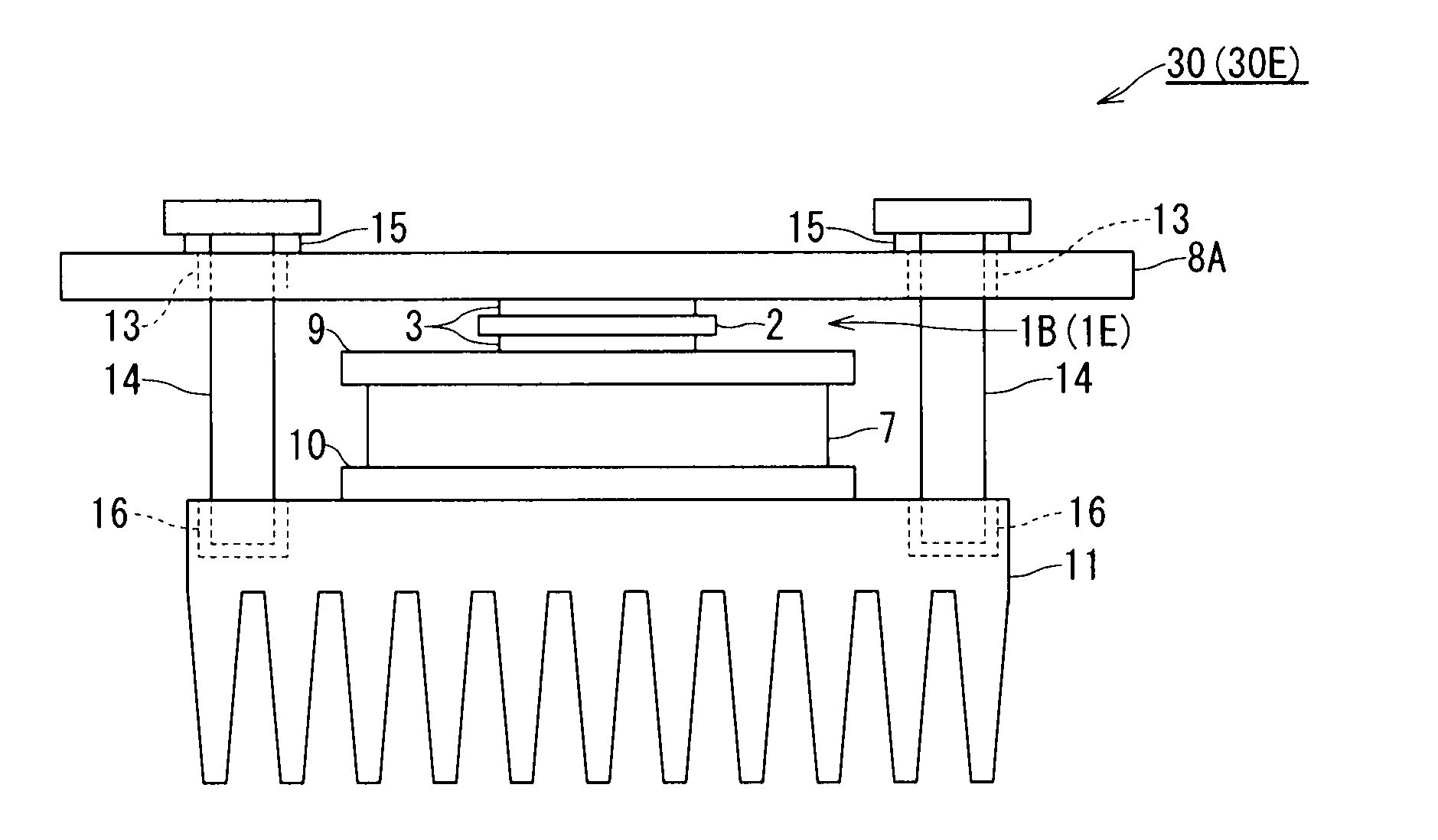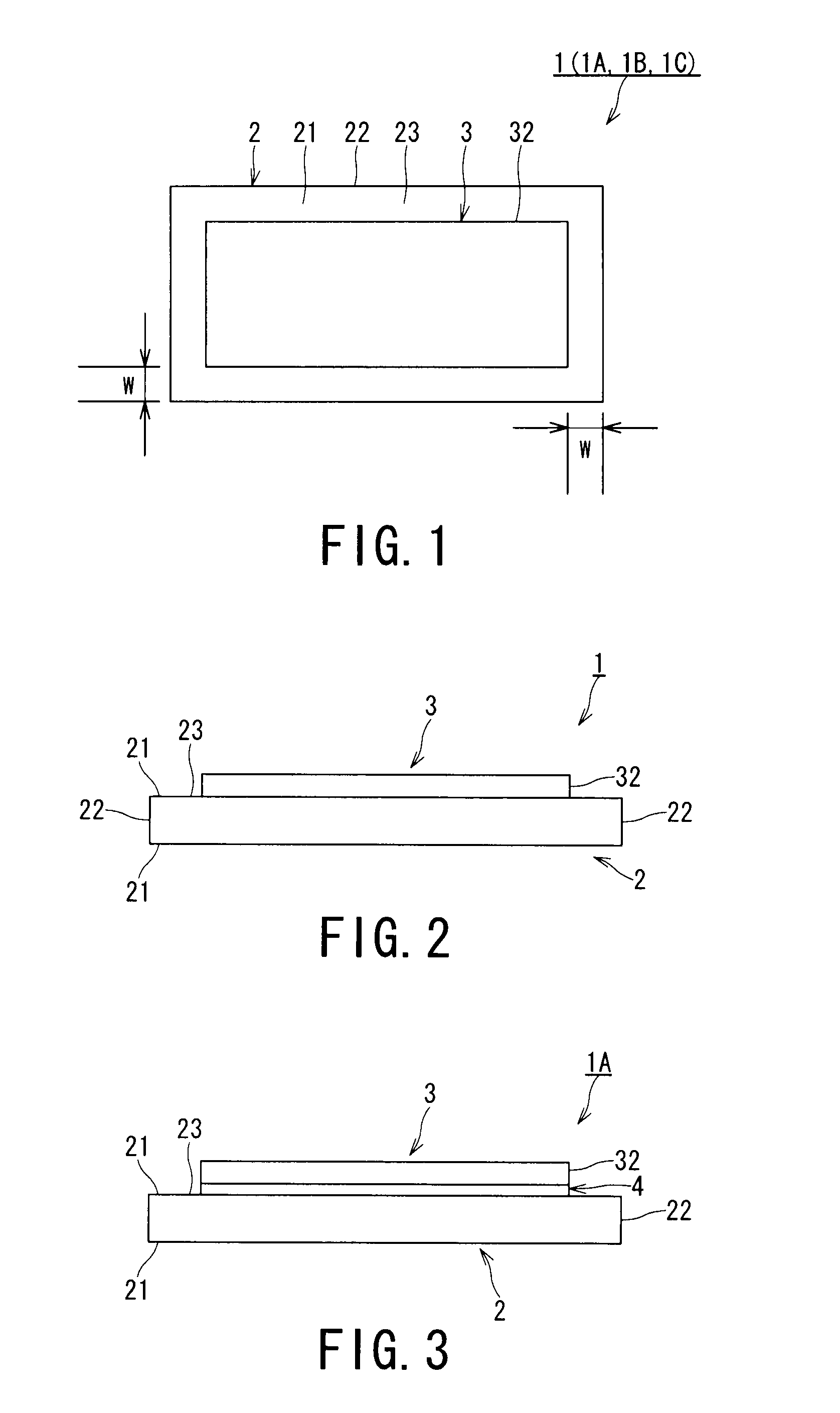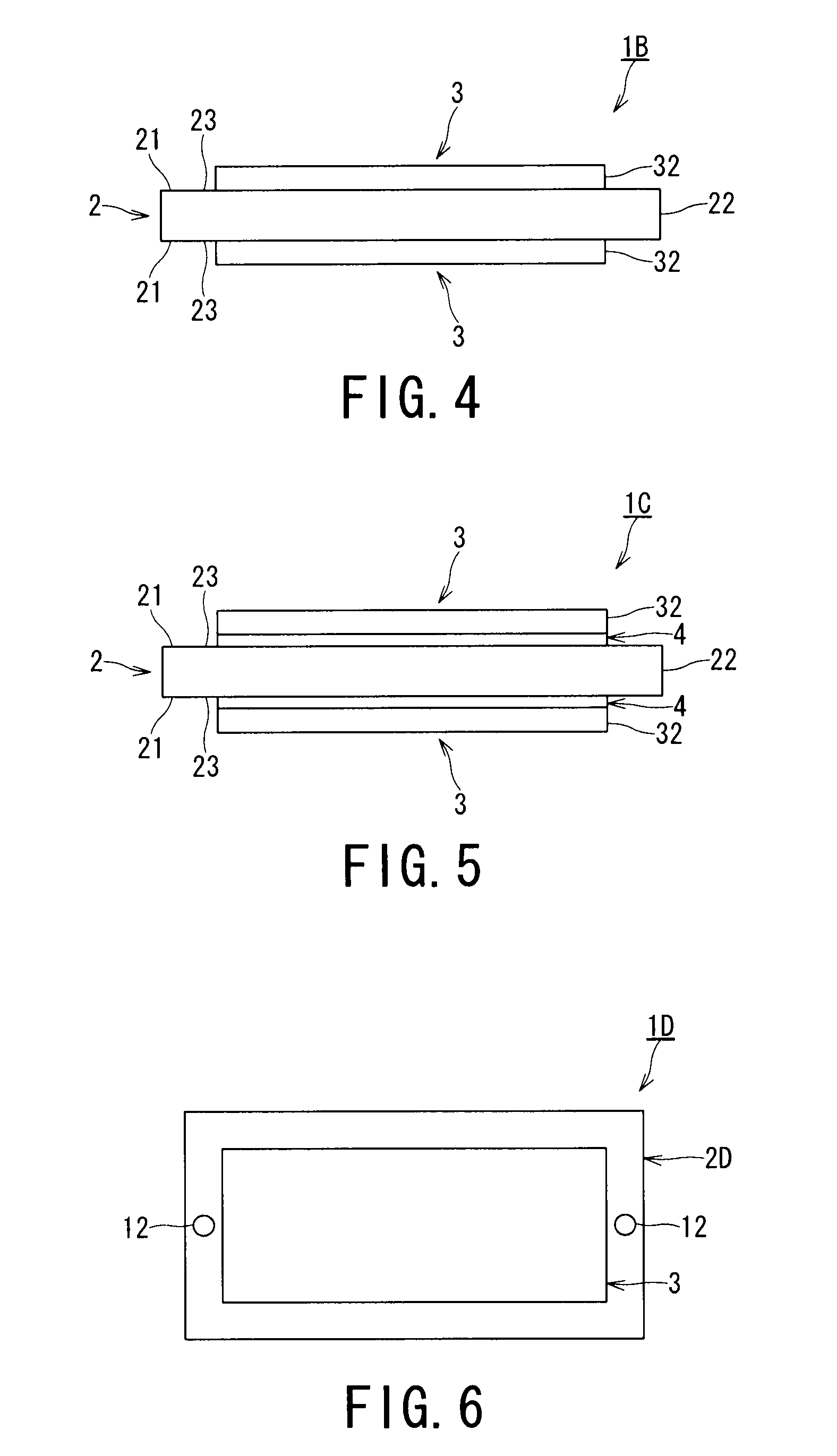Insulation sheet made from silicon nitride, and semiconductor module structure using the same
a technology of silicon nitride and silicon nitride, which is applied in the direction of film/foil adhesives, instruments, transportation and packaging, etc., can solve the problems of low thermal conductivity of substrates of about 18 w/mk, insufficient radiation properties, and low strength, and achieve the effect of lowering the thermal radiation properties of the module structur
- Summary
- Abstract
- Description
- Claims
- Application Information
AI Technical Summary
Benefits of technology
Problems solved by technology
Method used
Image
Examples
first embodiment
Effect of First Embodiment
[0123]The insulation sheet 1 made from silicon nitride illustrated as the first embodiment has the surface layer 3 having a predetermined flexibility provided on the surface of the silicon-nitride substrate 2, and accordingly when the insulation sheet 1 made from silicon nitride and the another member such as the pressing member arranged in the surface layer 3 side of the insulation sheet 1 made from silicon nitride are brought into pressure contact with each other, the insulation sheet 1 made from silicon nitride can come in close contact with the another member through the surface layer 3.
[0124]In addition, the insulation sheet 1 made from silicon nitride illustrated as the first embodiment enhances thermal conduction between the insulation sheet 1 made from silicon nitride and another member such as the pressing member, because the insulation sheet 1 made from silicon nitride comes in close contact with the another member such as the pressing member.
[012...
second embodiment
Effect of Second Embodiment
[0141]The insulation sheet 1A made from silicon nitride illustrated as the second embodiment shows a similar effect to that of the insulation sheet 1 made from silicon nitride illustrated as the first embodiment.
[0142]In addition, the insulation sheet 1A made from silicon nitride illustrated as the second embodiment has more enhanced bonding strength between the silicon-nitride substrate 2 and the surface layer 3 in comparison with the insulation sheet 1 made from silicon nitride illustrated as the first embodiment because the reaction layer 4 strongly bonds the surface layer 3 to the silicon-nitride substrate 2.
[0143]The insulation sheet 1A made from silicon nitride illustrated as the second embodiment has thus high bonding strength. Accordingly, the insulation sheet 1A can show sufficient durability and thermal radiation properties when being used as the component of the semiconductor module structure having the first pressure contact structure in which ...
third embodiment
Effect of Third Embodiment
[0148]The insulation sheet 1B made from silicon nitride illustrated as the third embodiment shows a similar effect to that of the insulation sheet 1 made from silicon nitride illustrated as the first embodiment.
[0149]In addition, the insulation sheet 1B made from silicon nitride illustrated as the third embodiment can come in close contact with another member through the surface layers 3 in both front and back face sides of the silicon-nitride substrate 2, in comparison with the insulation sheet 1 made from silicon nitride which is illustrated as the first embodiment and has the surface layer 3 formed only on one face of the silicon-nitride substrate 2, because the insulation sheet 1B has the surface layers 3 formed on both front and back faces of the silicon-nitride substrate 2.
[0150]Furthermore, the insulation sheet 1B made from silicon nitride illustrated as the third embodiment enhances thermal conduction between the insulation sheet 1B made from silico...
PUM
| Property | Measurement | Unit |
|---|---|---|
| thickness | aaaaa | aaaaa |
| surface roughness Ra | aaaaa | aaaaa |
| thickness | aaaaa | aaaaa |
Abstract
Description
Claims
Application Information
 Login to View More
Login to View More - R&D
- Intellectual Property
- Life Sciences
- Materials
- Tech Scout
- Unparalleled Data Quality
- Higher Quality Content
- 60% Fewer Hallucinations
Browse by: Latest US Patents, China's latest patents, Technical Efficacy Thesaurus, Application Domain, Technology Topic, Popular Technical Reports.
© 2025 PatSnap. All rights reserved.Legal|Privacy policy|Modern Slavery Act Transparency Statement|Sitemap|About US| Contact US: help@patsnap.com



